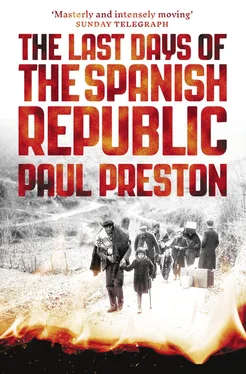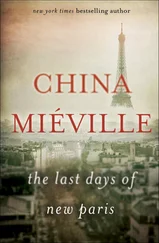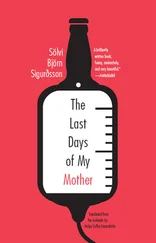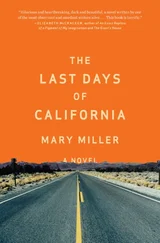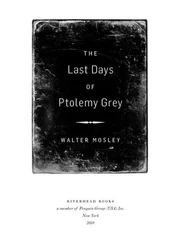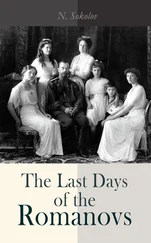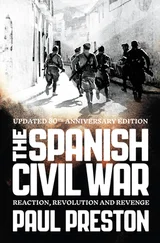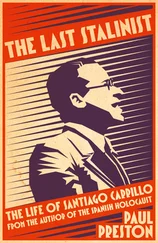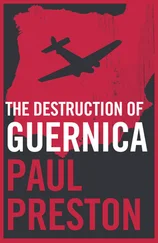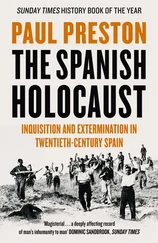The bitterness of Pasionaria is comprehensible, given that the Communists would be among the most immediate victims of Casado’s coup. Less partisan perhaps is the view of his collaborator, General Miaja, who referred to him in private as ‘four-faced’ on the grounds that to call him ‘two-faced’ would barely reflect the reality. 19More intriguing is the contemptuous judgement of Antonio Bouthelier España, a member of the fascist party Falange Española and one of Casado’s contacts with the Fifth Column. He described Casado as ‘a soldier who did not feel pride in his profession, who did not understand the word “service”, restless and ambitious, envious of politicians in top hat and frock coat, author of long-winded and solemn speeches … an eternal malcontent who acted only in his own interests’. 20
In a real sense, there was an inevitability about the eventual defeat of the Republic. The initial military rising took place on the evening of 17 July 1936 in Spain’s Moroccan colony and in the peninsula itself the next morning. The plotters were confident that it would all be over in a few days. Their coup was successful in the Catholic smallholding areas which voted for the right – the provincial capitals of rural León and Old Castile, cathedral market towns like Avila, Burgos, Salamanca and Valladolid. However, in the left-wing strongholds of industrial Spain and the great estates of the deep south, the uprising was defeated by the spontaneous action of the working-class organizations. Nevertheless, in major southern towns like Cadiz, Cordoba, Granada and Seville, left-wing resistance was soon savagely crushed.
Within days, the country was split into two war zones. The rebels controlled one-third of Spain in a northern block of Galicia, León, Old Castile, Aragon and part of Extremadura and an Andalusian triangle from Huelva to Seville to Cordoba. They had the great wheat-growing areas, but the main industrial – and food-consuming – centres remained in Republican hands. After vain efforts to reach a compromise with the rebels, a cabinet of moderate Republicans was formed under the chemistry professor José Giral. There was some reason to suppose that the Republic would be able to crush the rising. Giral’s moderate Republican cabinet had control of the nation’s gold and currency reserves and virtually all of Spain’s industrial capacity. However, it lacked a loyal functioning bureaucratic machinery, especially in the fields of public order and the economy.
There were three major advantages enjoyed by the military rebels that would eventually decide the conflict – the African Army, massive assistance from the fascist powers and the tacit support of the Western democracies. Republican warships were able for only three weeks to prevent the transportation from Morocco to Spain of the rebels’ strongest card, the ferocious colonial army under Franco. Moreover, the fact that power in the streets of Spain’s major cities lay with the unions and their militia organizations undermined the efforts of Giral’s government to secure aid from the Western democracies. Inhibited by internal political divisions and sharing the British fear of revolution and of provoking a general war, the French premier Léon Blum quickly drew back from early promises of aid. In contrast, Franco in North Africa was able to persuade the local representatives of Nazi Germany and Fascist Italy that he was the man to back. By the end of July, Junkers 52 and Savoia-Marchetti 81 transport aircraft were starting to airlift the principal components of the Army of Africa, the bloodthirsty Foreign Legion and the Moroccan mercenaries of the so-called Native Regulars, across the Strait of Gibraltar to Seville. Fifteen thousand men crossed in ten days and a failed coup d’état became a long and bloody civil war. That crucial early aid was soon followed by a regular stream of high-technology assistance. In contrast to the state-of-the-art equipment arriving from Germany and Italy, complete with technicians, spare parts and the correct workshop manuals, the Republic, shunned by the democracies, had to make do with over-priced and obsolete equipment from private arms dealers.
The rebels swiftly undertook two campaigns that dramatically improved their situation. Mola attacked the Basque province of Guipúzcoa, cutting it off from France. Meanwhile, Franco’s Army of Africa advanced rapidly northwards to Madrid, leaving an horrific trail of slaughter in their wake, including the massacre at Badajoz where 2,000 prisoners were shot. By 10 August, they had united the two halves of rebel Spain. The rebels consolidated their position throughout August and September as General José Enrique Varela connected Seville, Cordoba, Granada and Cadiz. For the Republicans, there were no spectacular advances, only retreats and two frustrating operations – the siege of the rebel garrison of Toledo in the fortress of the Alcázar and the futile attempt of anarchist militia columns from Barcelona to recapture Zaragoza, which had fallen quickly to the rebels.
The Spanish Republic was fighting not only Franco and his armies but increasingly also the military and economic might of Hitler and Mussolini. Snubbed by France and Britain, the Republican premier, Giral, turned to Moscow. The initial reaction of the Soviet Union was one of deep embarrassment. The Kremlin did not want the events in Spain to undermine its delicately laid plans for an alliance with France. However, by mid-August, the flow of help to the rebels from Hitler and Mussolini threatened an even greater disaster if the Spanish Republic fell. That would severely alter the European balance of power, leaving France with three hostile fascist states on its borders. Stalin’s reluctant decision to aid Spain was thus based on raison d’état. Distance and organizational chaos meant that it was mid-September before the transportation of any equipment to Spain. The first shipment of ancient rifles and machine guns arrived on 4 October. Only at the end of September, after the Republic had agreed to send its gold reserves to Russia, was the decision taken to send modern aircraft and tanks – which had to be paid for at inflated prices.
In the meantime, the all-Republican cabinet of Professor Giral had given way to a more representative government of Republicans, Socialists and Communists under the premiership of the veteran trade unionist Francisco Largo Caballero. Although popular among workers, Largo Caballero lacked the energy, determination and vision to direct a successful war effort. He failed to see that an effective war effort required a centralized state apparatus. 21While the Republic floundered in search of foreign assistance and its disorganized militias fell back on the capital, the rebels tightened up their command structure. On 21 September at an airfield near Salamanca, the leading rebel generals met to choose a commander-in-chief both for obvious military reasons and to facilitate relations with Hitler and Mussolini. Already enjoying good communication with the Führer and the Duce, Franco was their choice. On the same day, Franco decided to divert his columns, now at the gates of Madrid, to the south-east to Toledo. He thus lost an unrepeatable chance to sweep on to the capital before its defences were ready. However, by relieving the Alcázar, he clinched his own power with an emotional victory and a great media coup. He was also able to slow down the pace of the war in order to carry out a thorough political purge of captured territory. On 28 September, he was confirmed as head of the rebel state. Thereafter, he ruled over a tightly centralized zone. In contrast, the Republic was already severely hampered by intense divisions between the Communists, the middle-class Republicans and moderate Socialists on the one hand, who were rebuilding the state apparatus to make a priority of the war effort, and the anarchists, Trotskyists and left Socialists on the other, who wanted to put the emphasis on social revolution.
Читать дальше
